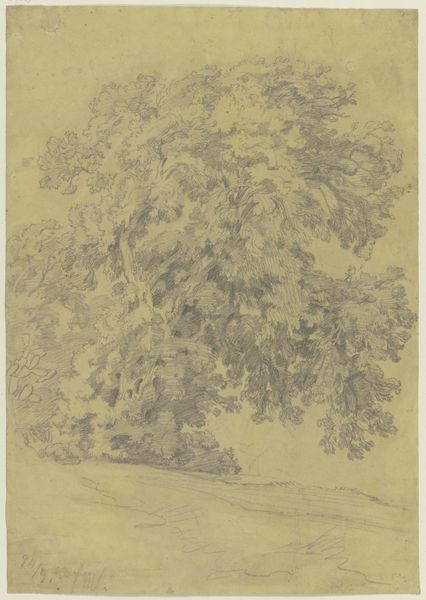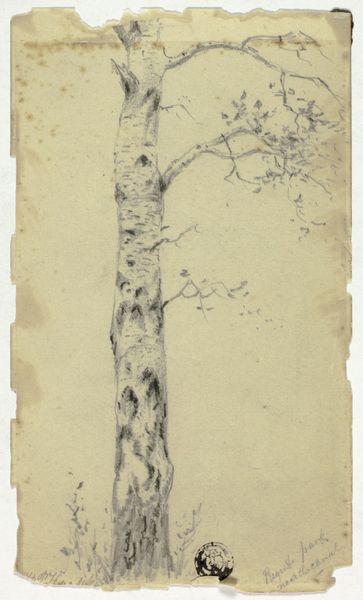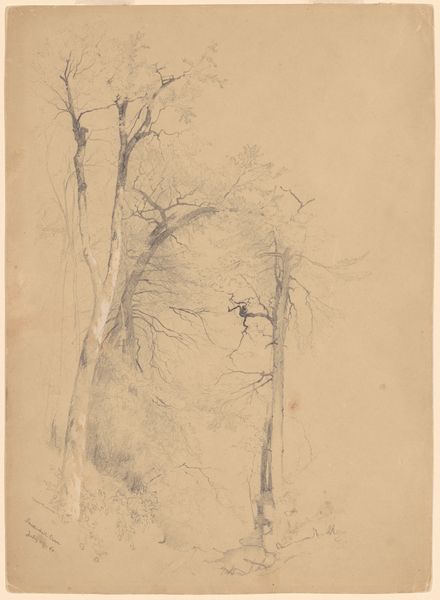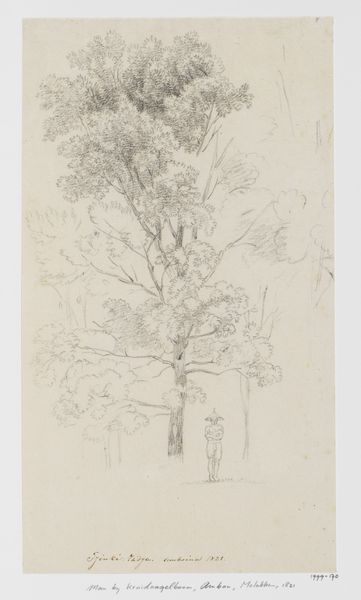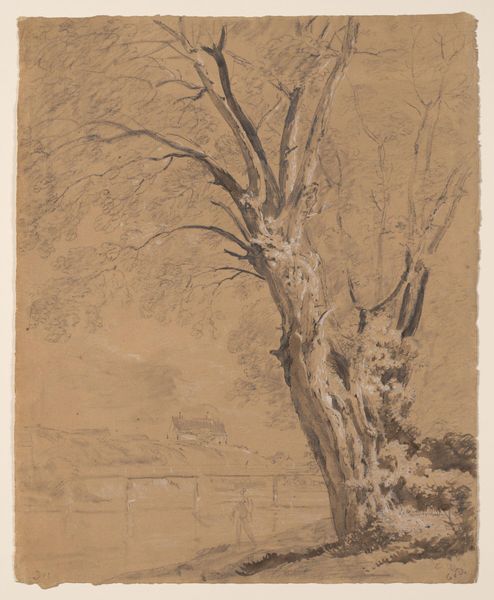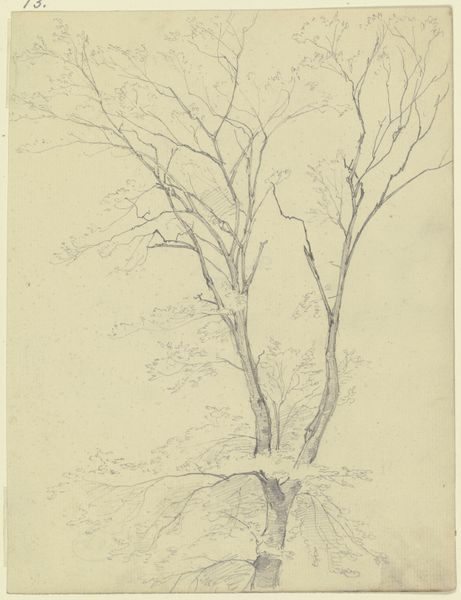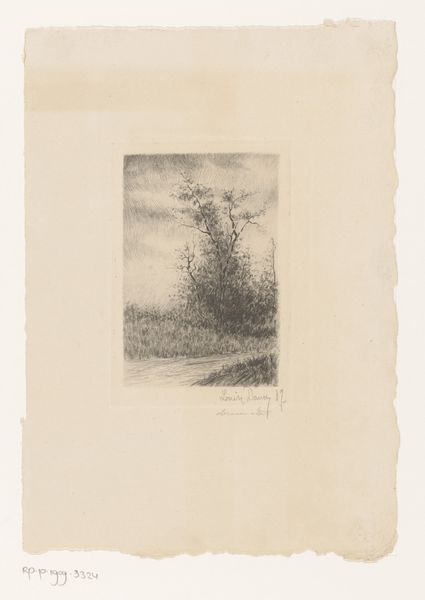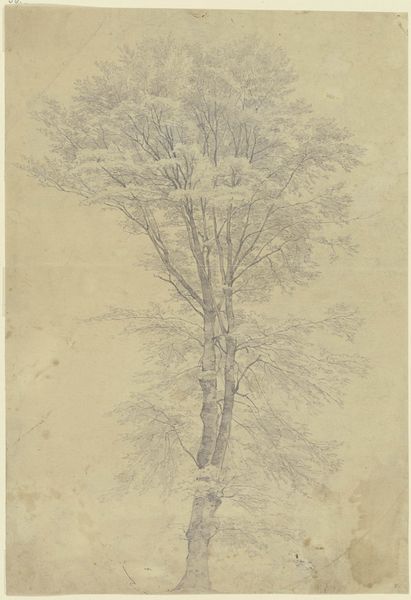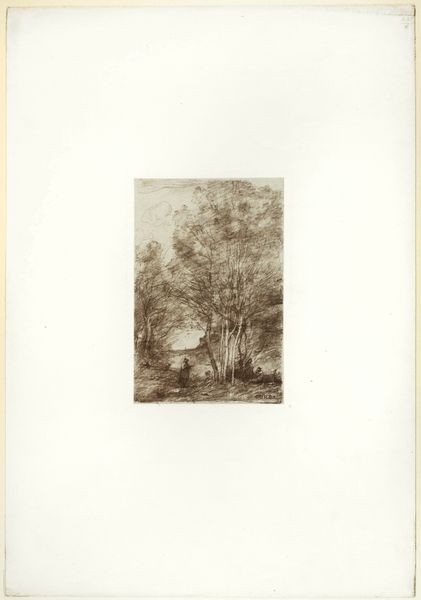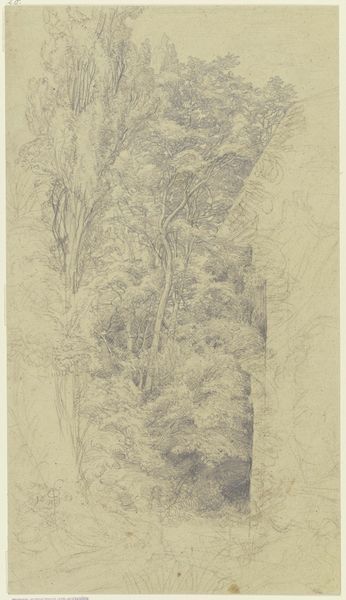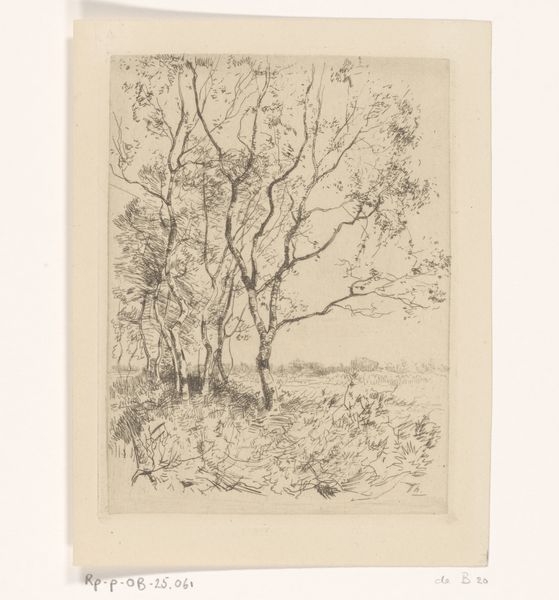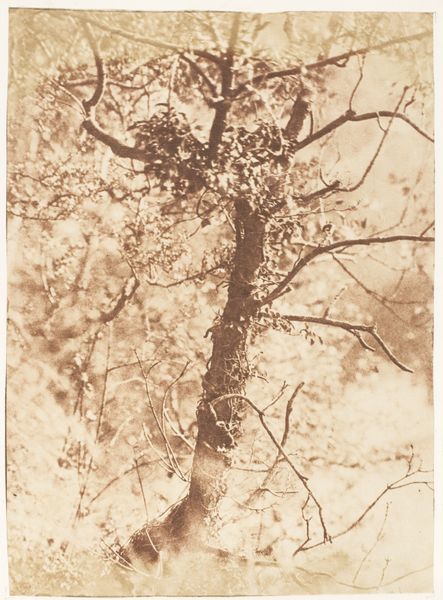
Dimensions: 248 × 180 mm (image/plate); 256 × 178 mm (sheet)
Copyright: Public Domain
Curator: Right, let's consider Theodore Roussel's etching, titled "Spring," created in 1906. It’s an interesting exploration of the season using the print medium. Editor: Mmm, it's ethereal, isn't it? Almost feels like a faded memory of a spring day. All those delicate lines, the soft grays… I’m immediately drawn to that sense of quiet observation. Curator: Exactly. It's intriguing to see how Roussel utilized etching, a process that relies on the corrosion of metal by acid to create lines, to capture such a transient subject as springtime. One might analyze the various 'bitings' in the plate, each impacting the depth and darkness of line. This offers clues to the steps involved in the image’s material creation, and its own industrialized process. Editor: I get that! And thinking about it, maybe that almost ghostly quality I'm feeling comes from the process itself—that corrosive action leaving its mark, capturing the fading light. It does feel deliberately transient; there’s something dreamlike in the way the tree seems to almost melt into the building behind it. Curator: Roussel was really playing with the relationship between image and material object. Note how he incorporated touches of impressionism into this very structured process. He probably aimed to challenge traditional fine art hierarchies that elevated oil painting over printed media. Editor: True. The layering creates a fantastic textured surface that rewards close attention. The way the leaves around the crown are rendered makes me think of dappled light. Curator: Indeed. Considering that the print medium facilitates reproducibility, it also democratized art access at a time of growing consumption and industrial capitalism. “Spring” provides interesting insight into this paradigm through subject and means of artistic production. Editor: Seeing it through that lens helps appreciate its deeper meanings, outside pure aesthetics. So many layers—artistic, social, even chemical, going into such a subtle piece. It definitely grows on you. Curator: Agreed, its quiet presence becomes almost potent the more one thinks about how Roussel skillfully layered those contextual dynamics.
Comments
No comments
Be the first to comment and join the conversation on the ultimate creative platform.
